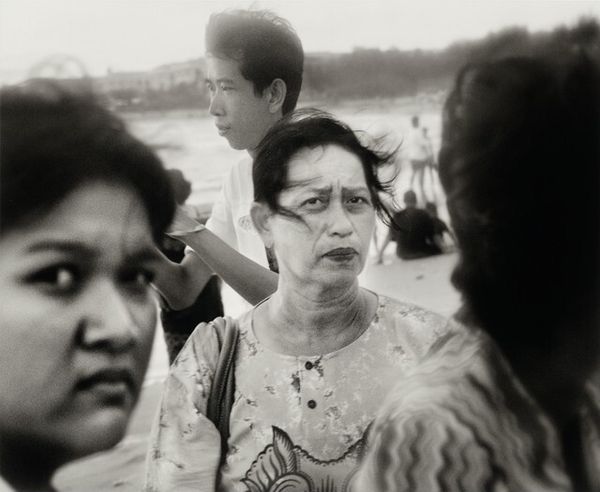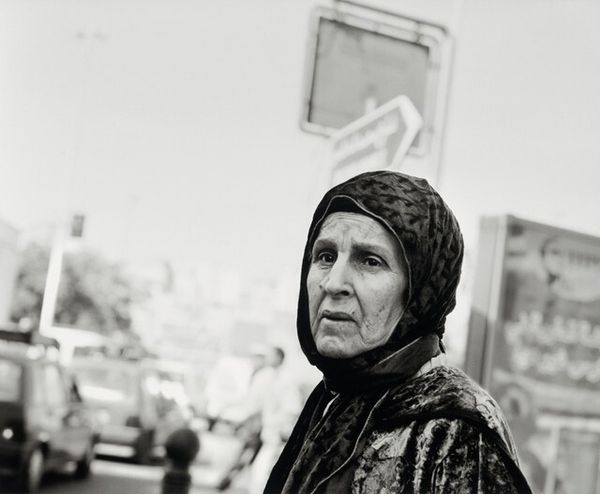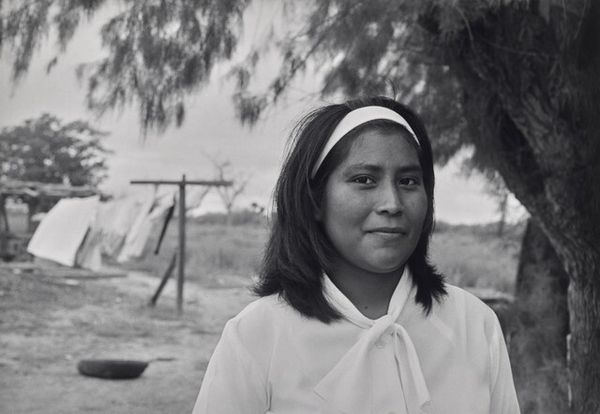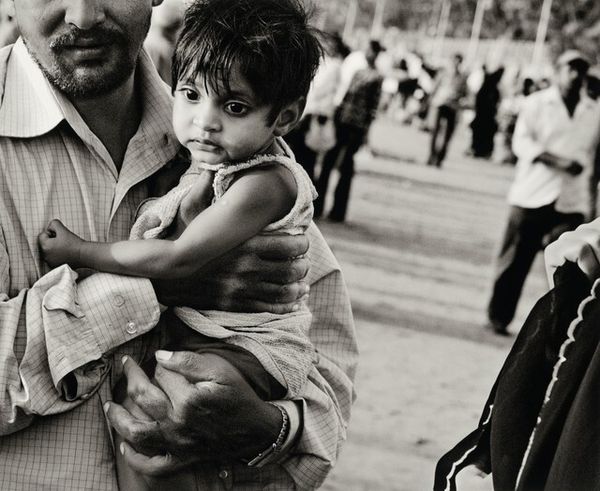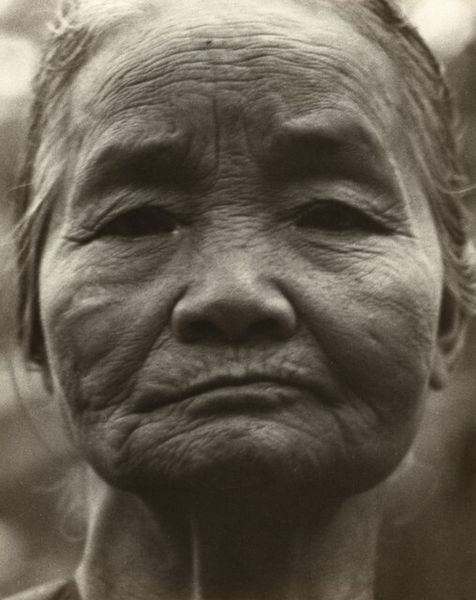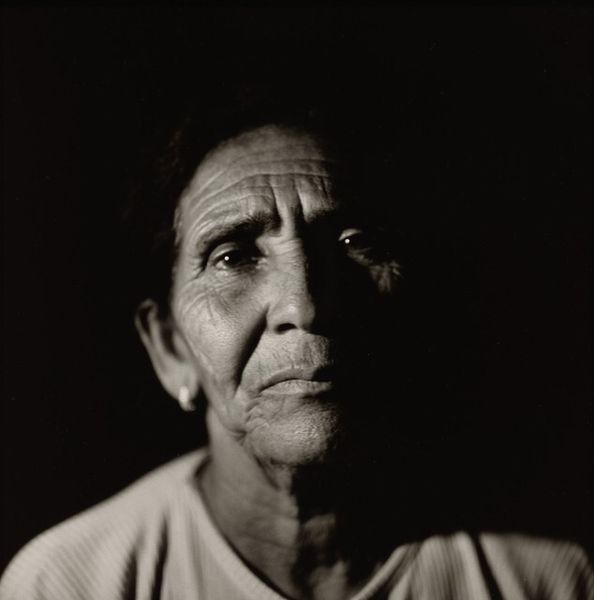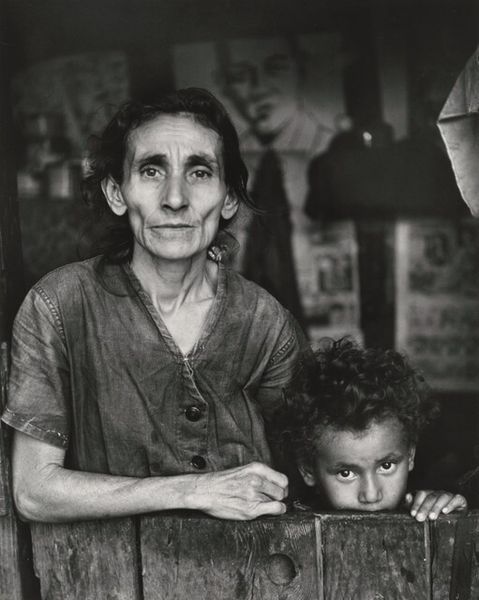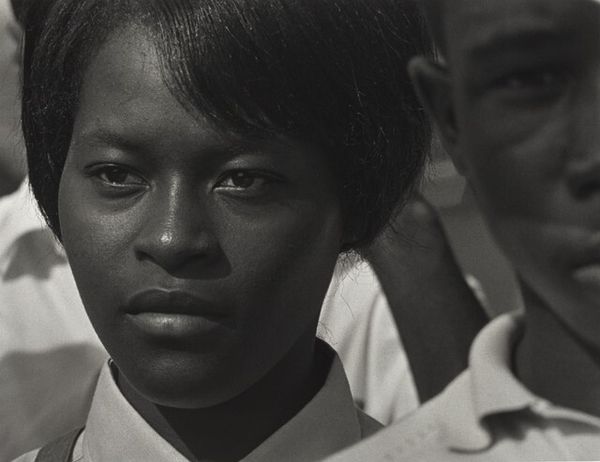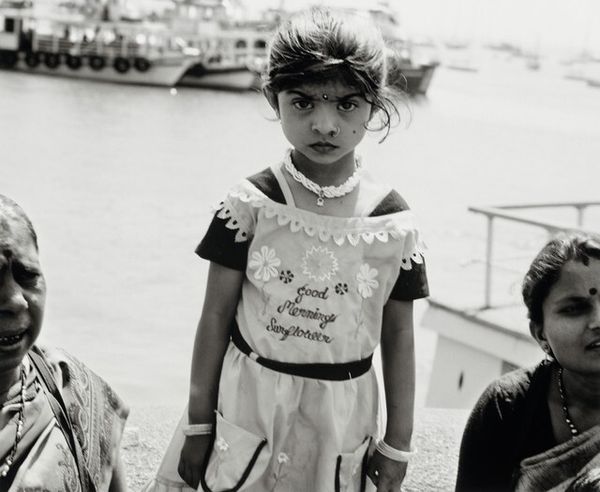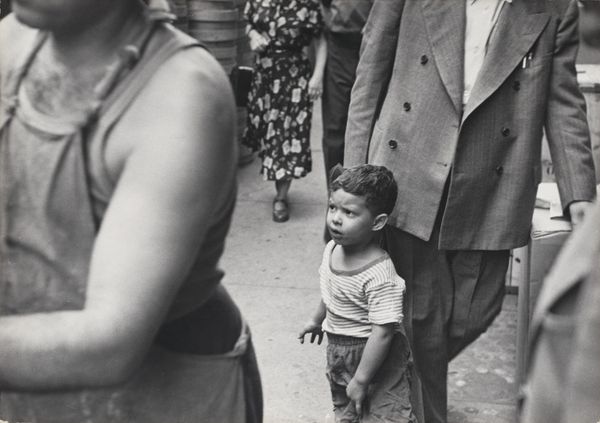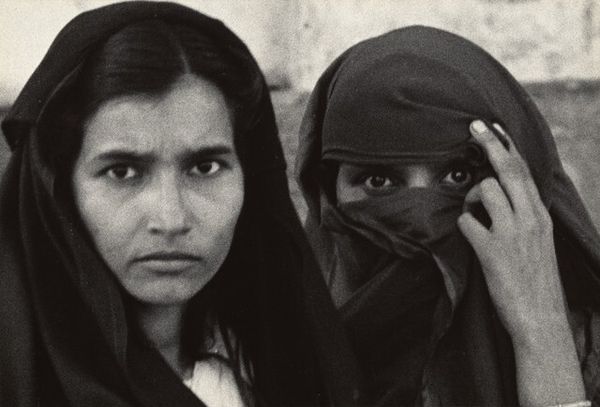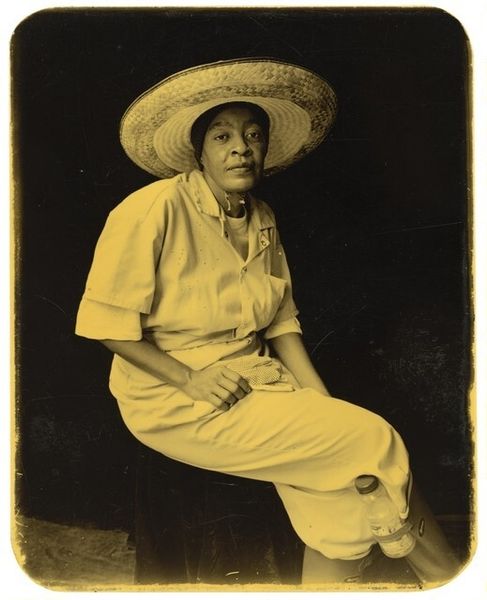
photography
#
black and white photography
#
street-photography
#
photography
#
historical photography
#
black and white
#
monochrome photography
#
monochrome
Dimensions: image: 40.64 × 49.53 cm (16 × 19 1/2 in.) sheet: 58.42 × 67.31 cm (23 × 26 1/2 in.)
Copyright: National Gallery of Art: CC0 1.0
Curator: Leo Rubinfien’s photograph, titled “Manila, 2005, in Quiapo”, captured somewhere between 2005 and 2014, is a black and white piece from his extensive body of work on urban life in different countries. Editor: My first thought is melancholy. Her expression, the monochrome… it speaks of resilience tinged with weariness. Like the city itself perhaps. Curator: Exactly. Rubinfien, having worked in corporate and fashion photography early on, brings a keen eye to how visual culture shapes individual experiences in a social landscape. Note the almost brutal directness, forcing us to confront the everyday lives so often marginalized. This wasn't just photojournalism for him; it was deeply anthropological. Editor: Yes, it does avoid romanticism. What's striking is how present she is, almost defiant in her stillness amidst the bustling crowd. And yet, something in her eyes feels deeply vulnerable. Makes me wonder about the materials used to make it too. Was there a particular kind of darkroom process for these older monochrome photographs that impacted the print qualities, in effect also helping with its narrative value? Curator: Well, we know Rubinfien has an obsessive printing process using specialized developers, controlling the tonal ranges in the print itself. It affects the longevity of the image but it also has profound effects on its look. Editor: You’re right. You sense a great depth. Beyond the moment, beyond the surface. Makes you want to just listen to all those untold stories in this vibrant city. But, also feel a little… powerless in understanding them without context. Curator: Which leads us to ask; how does a western gaze operate within such contexts? It raises ethical questions concerning who has the authority to represent whom, and at what cost. Editor: In essence, art's currency then becomes one of not just showing, but really examining and negotiating perspectives. To create a conversation. And it does so here, in the choices Rubinfien makes through form. Curator: Precisely, an artifact born of myriad relations. Not separate. But enmeshed, messy, complex…like all worthwhile exchanges, wouldn't you say? Editor: Absolutely. And isn’t that the point? To pause and truly see, to ask the harder questions. It may make one uneasy to consider, but is very important for engaging with it beyond aesthetics.
Comments
No comments
Be the first to comment and join the conversation on the ultimate creative platform.
